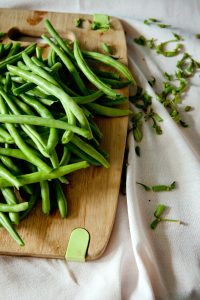
Food waste is a pressing issue that affects the health of our environment, community, and finances. From careful meal planning to leveraging leftovers, here’s Park City Community Foundation’s tips to help you minimize waste and make a positive impact.
- Plan Your Meals Thoughtfully
Meal planning is an effective way to reduce food waste. Creating a meal plan can help you know exactly how much you need before you buy groceries and help prevent you from buying items you won’t use. Keep track of what ingredients you already have, so as not to buy excess, or forget about something until it’s gone bad.
- Donate Food
Before throwing away excess food, consider donating it. Many local nonprofits, food banks, and shelters accept non-perishable items as well as fresh produce and cooked meals. Some local examples include the Christian Center of Park City’s Food Pantry, and the Utah Food Bank in Salt Lake.
- Share with Friends and Neighbors
Sharing food with friends, family, or neighbors is a great way to avoid waste and foster community. Whether it’s a dish you’ve made in excess or an ingredient you won’t use in time, offering it to someone else can ensure it gets used rather than discarded. Consider starting a food swap with your community.
- Master the Art of Meal Prep
Meal prepping might sound like the same thing as meal planning from number one, but it’s taking the same concept a step further. Cook your planned meals in batches and store them in portion-sized containers, which you can store in the fridge or freezer. This approach ensures you use up ingredients efficiently and can help you avoid the temptation to order takeout.
- Embrace Frozen Foods
Freezing is a fantastic way to extend the life of many foods. Fresh fruits, vegetables, and meats can all be frozen to preserve their shelf life. It’s a myth that frozen produce isn’t as healthy, in fact it generally retains nutrients for longer than its unfrozen counterparts.
- Save and Repurpose Leftovers
Leftovers don’t have to be boring. Get creative with your repurposing: turn roast chicken into chicken soup or a veggie stir-fry into a frittata. Don’t leave leftovers to rot in the back of the fridge. Properly store them in airtight containers to maintain their quality and consume them within a few days.
- Understand “Use By” vs. “Best By” Dates
Many people confuse “use by” and “best by” dates. The “use by” date is a safety guideline, indicating the last date the product is guaranteed to be safe to eat. The “best by” date, on the other hand, is more about quality. Often, food is still safe to eat after this date, though its flavor or texture might not be at its peak. Use your senses—smell, taste, and sight—to determine if food is still good.
- Get Creative with Scraps
Instead of discarding vegetable scraps, consider making broths or learning to compost. Onion peels, carrot tops, and celery ends can all be used to make flavorful homemade broths. Composting kitchen scraps is a wonderful way to enrich your garden soil if you have one. Recycle Utah has a guide on composting in Summit County. Alternatively, you can sign up for the Zero Food Waste program with Momentum Recycling for food waste curbside pick-ups using the Community Foundation’s incentive program.
- Educate Yourself and Others
Stay informed about best practices for food storage, preservation, and waste reduction. Share these tips with friends and family to help spread the word. The more we know about how to manage our food efficiently, the more we can reduce our collective food waste.
By integrating these strategies into your daily routine, you can make a significant difference in reducing food waste. Not only will you be contributing to a more sustainable environment, but you’ll also save money and enjoy more efficient use of your resources. Let’s start making a change today, one meal at a time.